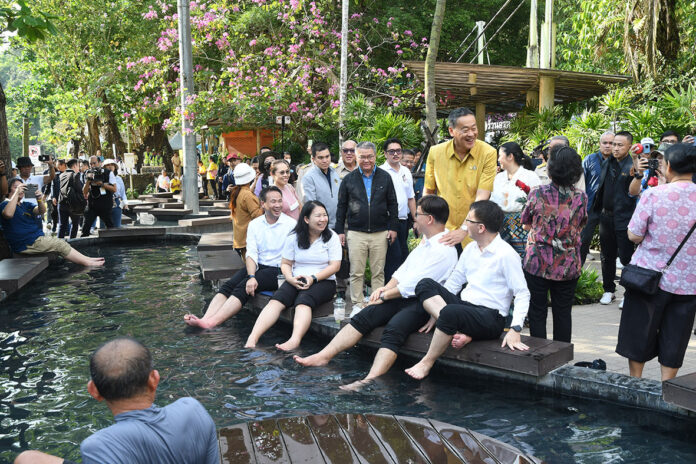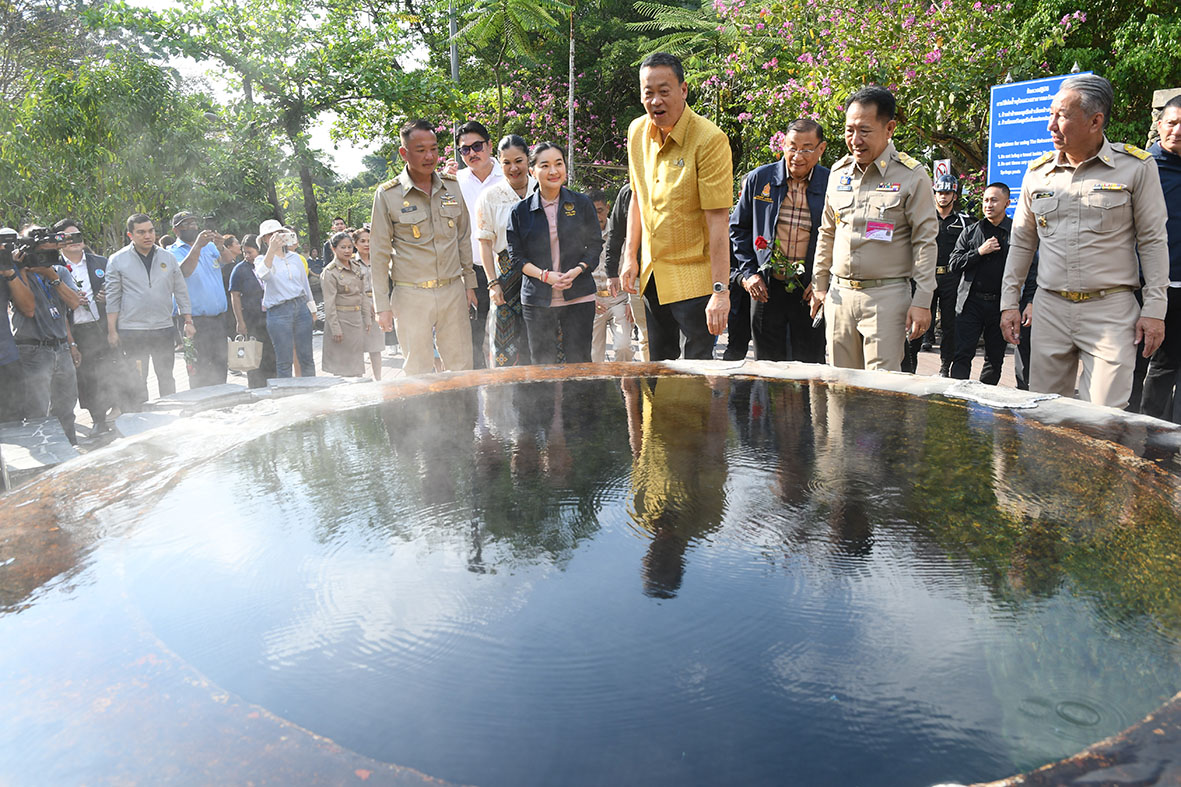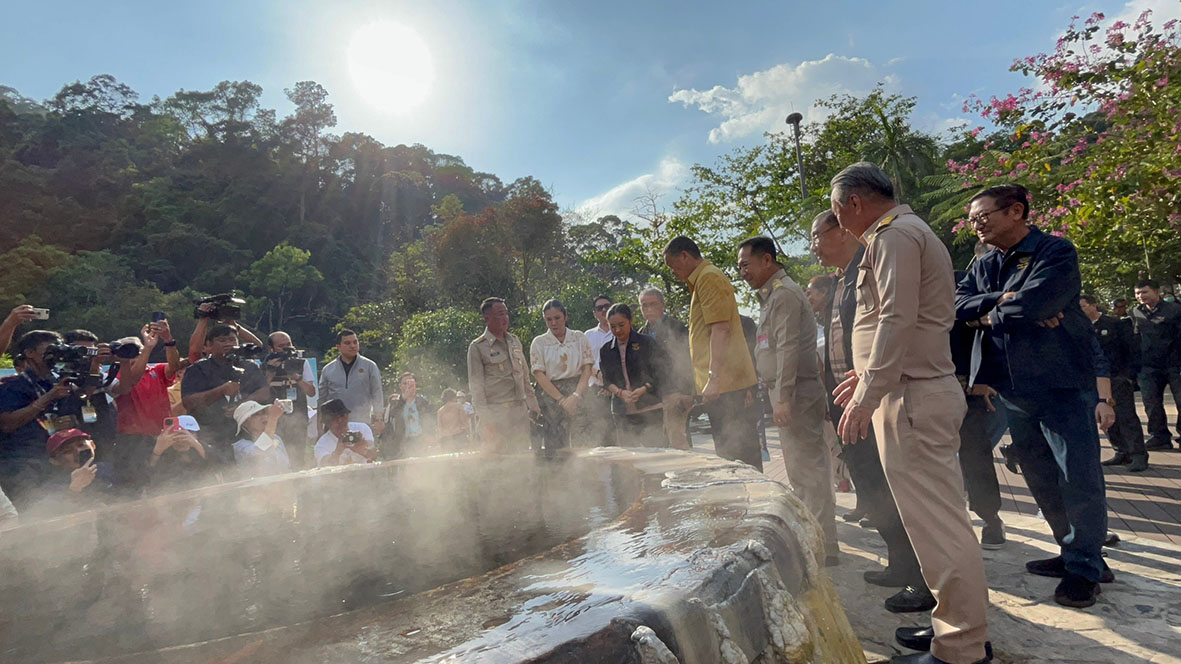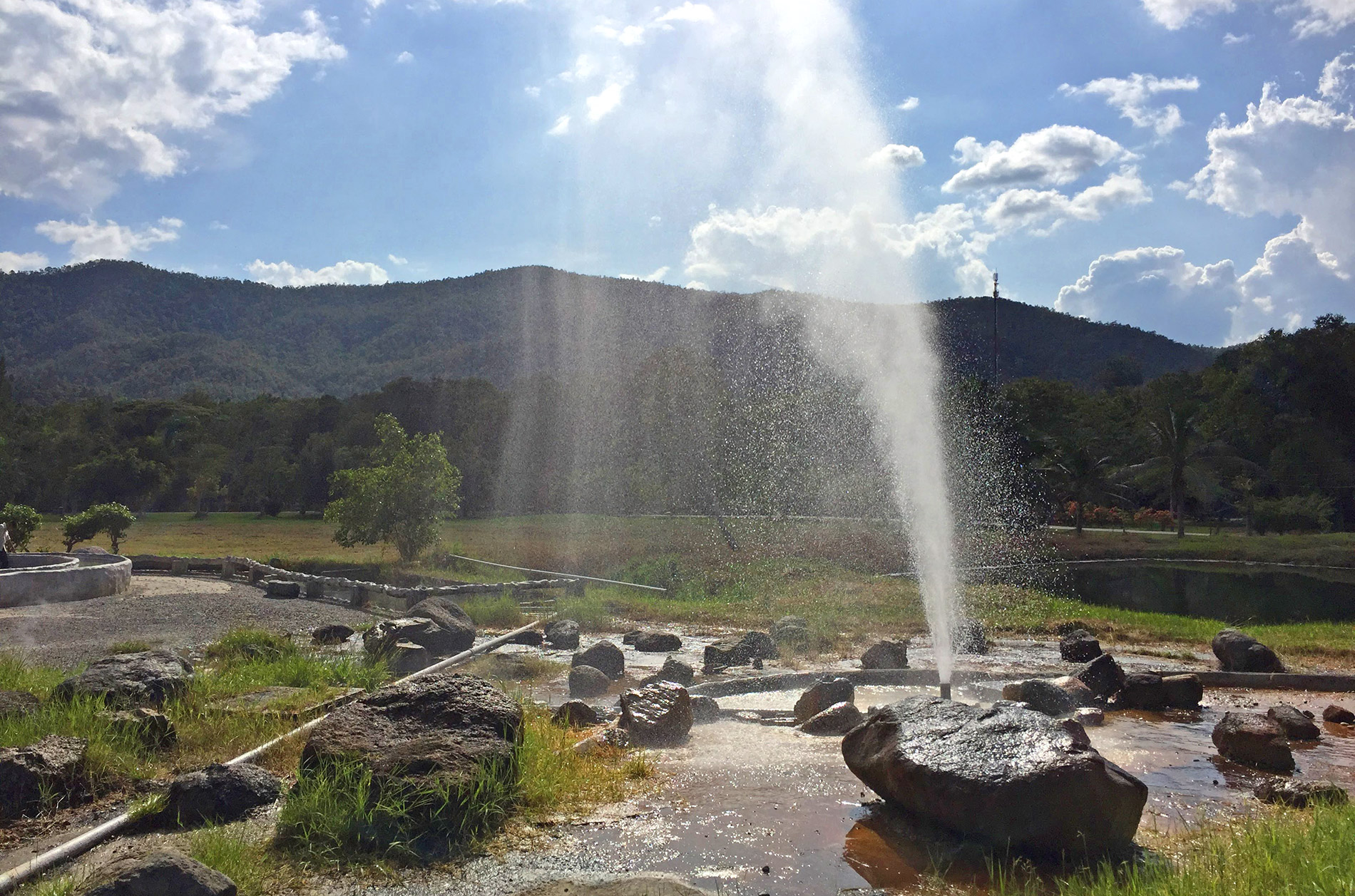
RANONG – The Ministry of Tourism and Sports has set the goal of urgently upgrading the hot springs in Thailand to “spa towns” like in Europe or “onsen towns” like in Japan in order to create a hot spring economy.
Sudawan Wangsupakitkosol, Minister of Tourism and Sports, said during visit to Ranong Province that Thailand’s hot springs have great potential but developed over 1,000 years later than countries in Europe and Japan. The government will now create competitiveness by focusing on meeting the needs of tourists and consumers in modern times.
To this end, the hot springs in nearby provinces will be developed into a system of 7 hot spring or wellness routes and linked together to create a global marketing brand and expand tourism to secondary cities.

According to a study and collection of data on hot springs in Thailand conducted by the Department of Mineral Resources and the Office of Natural Resources and Environment Policy and Planning, there are 118 hot springs in Thailand. Most of them are located in the north (71), followed by the south (32), the central plains (12), and the east (2).
The Thai Hot Springs Club had previously proposed to the cabinet a special budget of 270 million baht. The club also proposed that the Ministry of Tourism and Sports host a pilot project aimed at opening hot springs in Thailand by 2025 as a quick-win project.

The Thai Hot Springs Club has proposed a feasibility study for the design and construction of 16 hot springs in 5 provinces on the Andaman coast: Ranong, Phang Nga, Krabi, Trang and Satun.
The aim of the plan is to upgrade the service from the current level of local users to the level of international standard for public spas in order to support health tourism, generate and distribute income in the tourist destinations as well as improve quality and increase competitiveness in tourism under the Andaman Wellness Corridor brand.

An example of the opportunities and benefits of developing hot springs for the public is the Tambon Khlong Thom Nuea sub-district, which manages the hot waterfall and the Khao Pra-Bang Khram Wildlife Sanctuary, which looks after the emerald pool. Every day, 500-1,000 tourists come here. The sub-district charges an entrance fee of 200 baht, bringing in 50,000-200,000 baht per day or 18-72 million baht per year.
If the hot springs can be developed into a tourist destination, the income can increase 100-200 times. This stems from the current fees of 5-20 baht for local users, which are calculated based on daily expenses, including accommodation, food, souvenirs and travel. For Thai tourists this is about 2,000 baht per day and for foreign tourists about 4,000 baht per day.
____
Related articles:
Thailand’s Five Secondary Cities Offer Their Highlights in Tourism













































